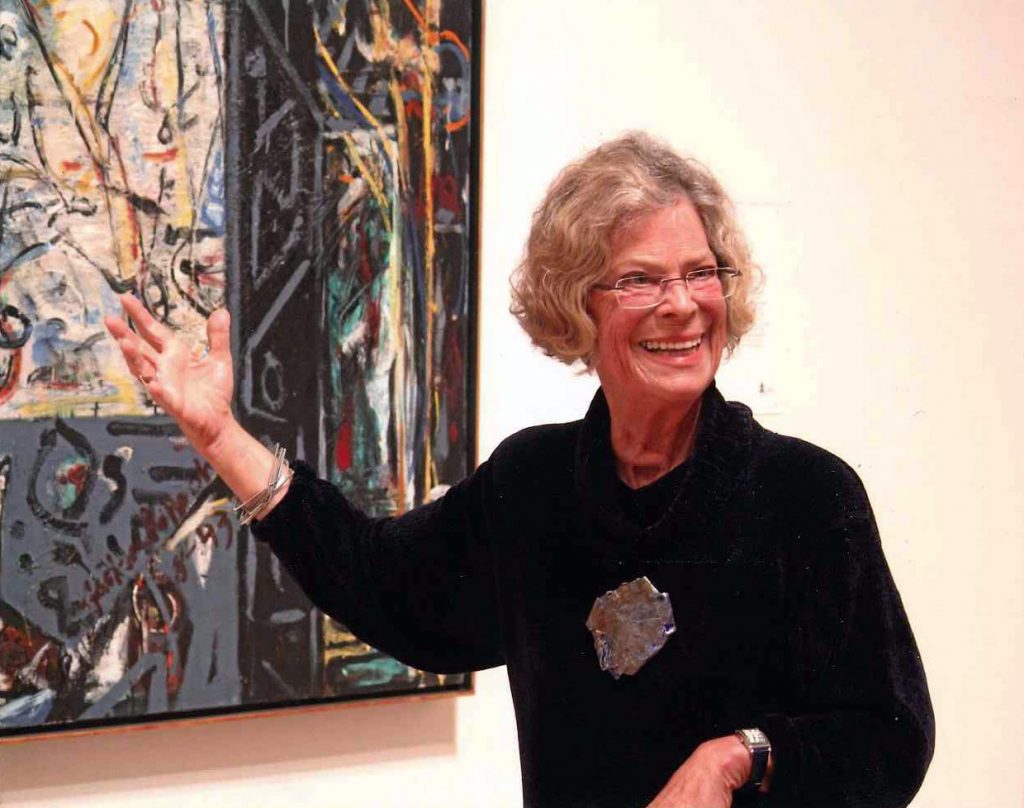CULTURE BEAT | PAM FEINSILBER
For 35 years, Jean Halvorsen has traveled between her home in the neighborhood and the San Francisco Museum of Modern Art.
Back when the museum was in the Civic Center, above the Herbst Theater, she volunteered as a docent. In 2000, once the museum was ensconced in its own building south of Market, she was asked to set up a private tour program and hire the guides.
Now she’s one of 15 private guides on staff, each week leading paying groups that select the focus of their tour — whether paintings and sculpture, photography, architecture or, between now and October 9, the just-opened exhibition Edvard Munch: Between the Clock and the Bed, featuring 44 paintings by Norway’s most famous artist.
What are the private tours like?
These are one-hour tours led by people with deep art history backgrounds and a light touch. One of the keys to being any kind of guide or docent is getting a feel for what your audience would like, and how much. The clientele is really varied, from boards of trustees of other museums to mothers of Girl Scouts. The guides assess the people in the group and speak to their level of knowledge.
How did you and the other guides prepare for the Munch exhibition before it opened?
I attended a couple of lectures, and we were given images of all the pieces in the exhibition. And we know the layout. Whenever a curator sets up a room, it’s with an eye to making connections among the pieces. With this show, the rooms are devoted to particular topics, such as love or sorrow.
And I’m Norwegian. I’ve been to the Munch Museum in Oslo. Munch’s family story feels a little familiar to me because it’s my family story — I had a rather stern, unkind father — so already I feel I understand Munch.
Most of us know The Scream, but as a progenitor of modernist art, Munch influenced a lot of people. Most of the pieces are from museums in Europe — a lot of things we on the West Coast have never seen. When we view it, we’ll probably be able to see him in the work of artists that followed him.
After imagining it through images and layout, what did you think when you finally saw the exhibition?
It’s sooo much better to stand in front of paintings and feel whether they pull you in, or make you feel off-balance — or even give you chills, as some of these works do. It was a surprisingly visceral experience. I certainly can believe his father told them ghost stories inspired by Edgar Allen Poe.
How did you come to live here?
It was 1971. By chance, I was looking for both a place to live and for a job. The person interviewing me for the job said, “I know someone living in Cow Hollow and looking for a roommate,” and it turned out to be perfect. On top of that, I loved being able to say, “I’m from Cow Hollow.” There’s nothing named Cow Hollow in Manhattan. The day I left New York, it was 103 degrees. I got here and it was 54. I said, “This is my place.”
You’ve seen changes in the neighborhood?
Union Street has turned into sports central — if you want to buy workout clothes, or work out, or buy nutritious food or get a massage. It’s become a theme street. I was driving with someone the other day; he looked out the window and said, “Everyone around here is beautiful.” I said, “Everyone has been working out at SoulCycle.”
It’s strange to be in a place where there used to be boutiquey shops owned by real people, and now the stores all have famous names. It used to be more personal. But I was in the new Blue Bottle Coffee on Fillmore and Jackson the other day. The pastries at the museum used to be made by Caitlin Freeman, the wife of the owner, and most of the pastries at Blue Bottle are hers.
The shoemaker just closed, but the theater — the Clay — is still there, thank heavens. And I really love Fredericksen Hardware. You go in, pat a cat, and then find everything you need.
Filed under: Art & Design






